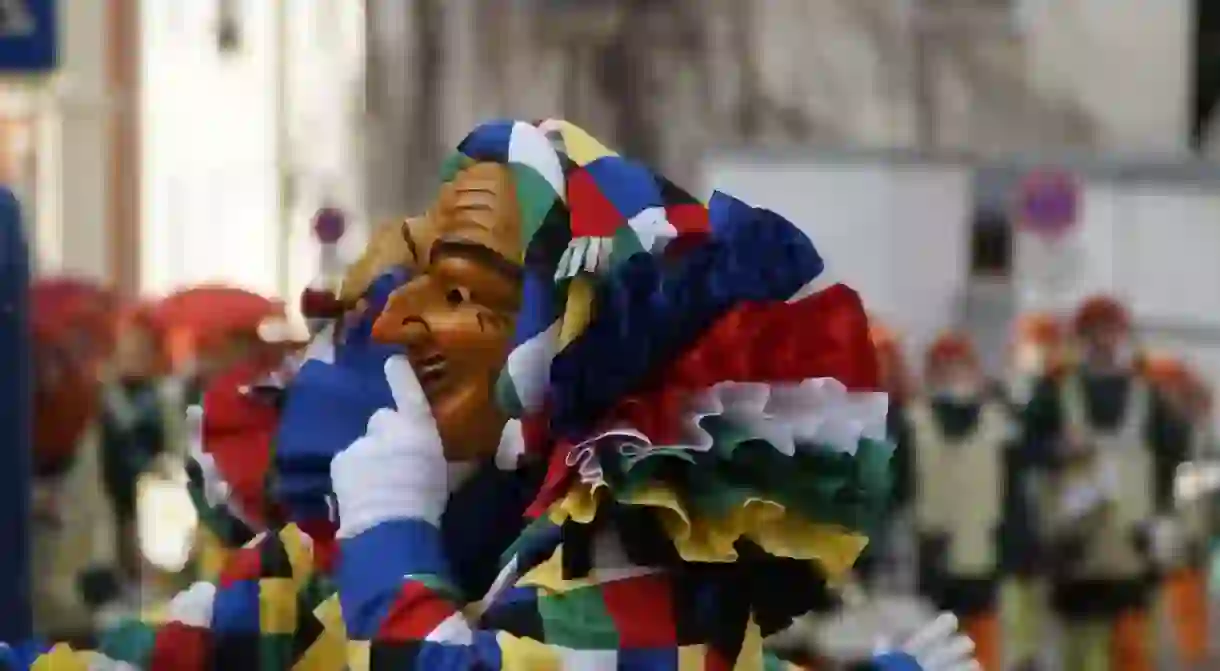11 Carnival Traditions Only Germans Will Understand

Carnival in Germany is no ordinary affair – Germans pull out all stops to make sure that it is a grand, mad and unforgettable event. Certain traditions are common to all carnivals across the country, while some are peculiar to specific regions. Here is a look at the quirky, crazy and funny traditions that leave non-Germans scratching their heads in confusion.
Different names
Though carnival takes place throughout the country at around the same time, it goes by different names in different regions. While Rhineland natives celebrate Karnival, people in parts of Bavaria, Berlin, Saxony and Brandenburg celebrate Fasching. In many other parts of Germany as well as other countries in Europe, natives call their carnival Fastnacht.
The starting date and time
Carnival season kicks off in Germany on the eleventh day of the eleventh month of the year (November 11) at exactly 11.11am, though this day is marked by little festivities. The reason for this is not known for certain, but a theory suggests that this may have something to do with the fact that 11 is considered to be närrische Zahl (foolish number).

Hoppeditz awakens
On November 11, 11.11am, the Jester awakens from a mustard pot, and delivers a scathing, insulting Narrenschelte (‘Joker’s Scolding’). The town mayor often responds to the speech, a ritual peculiar to Rhineland. At the end of the carnival, an effigy of the Jester is burned among much dramatic wailing and its remains are then buried.

Fool’s Shout
Each carnival has its Fool’s Shout or war cry, which is meant to be hollered in chorus every few minutes for no reason at all. In Cologne, revellers scream Kölle Alaaf! (Long live Cologne!), and Dusseldorfers shout Helau! The war cry in parts of Bavaria and North Germany is Ahoi! while the shout of choice in Berlin and Heidelberg is Hajo!
Necktie cutting
On the Thursday before Ash Wednesday, women dressed as witches snip off neckties of men they come across! In some regions, the men are compensated with a kiss.

Storming of town hall
In 1824, washer women of Bonn formed a committee to protest against male domination in carnivals. Today, women storm the town hall to symbolically claim their rightful place during the carnival. A chosen Princess of the Washer Women represents the interests of women.
Büttenrede
Büttenrede is a carnival speech delivered to a packed audience from a barrel-shaped podium by a Büttenredner (speaker). The speech, delivered in rhyming verses, criticises the country, society, politicians and rulers in scathing terms, with a generous dose of humour thrown in.
The male virgin
In Cologne, three important carnival figures – the prince, the peasant and the virgin – are always played by men. The virgin sports a smooth-face, braids and beautiful girly clothes, and blows kisses at the crowd.
Straw bears
In certain regions of South Germany, people dress up in huge bear costumes made of straw during the carnival. Though the reason for this is not evident, this tradition can be traced back to the Middle Ages.
Pig bladders
In parts of South Germany, people in clown costumes tease people with pig bladders hanging from sticks, sending people shrieking and running away.

Straw-man bonfires
On Shrove Tuesday, straw effigies are burned, symbolizing the burning of sins. These big carnival bonfires are known as Nubbelverbrennung.














